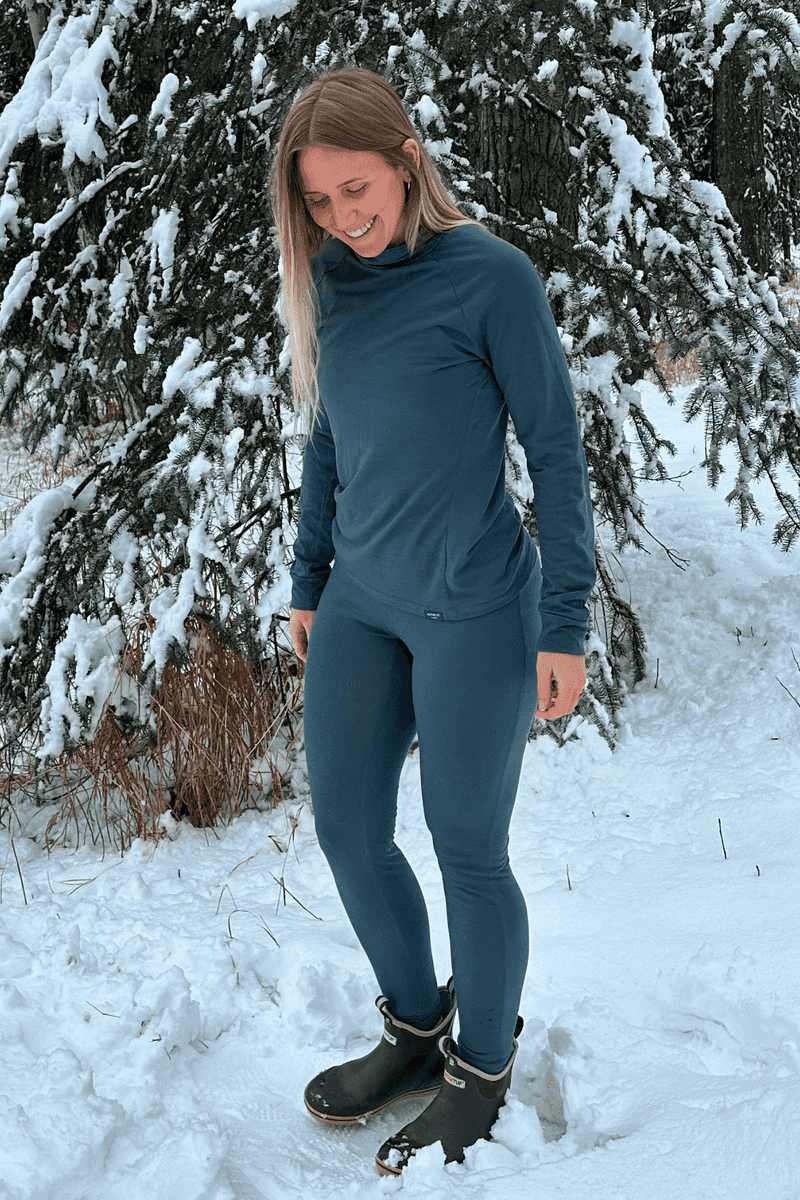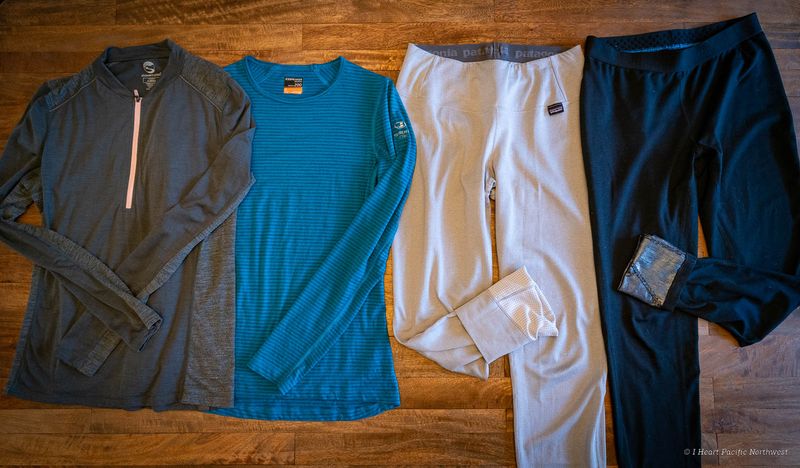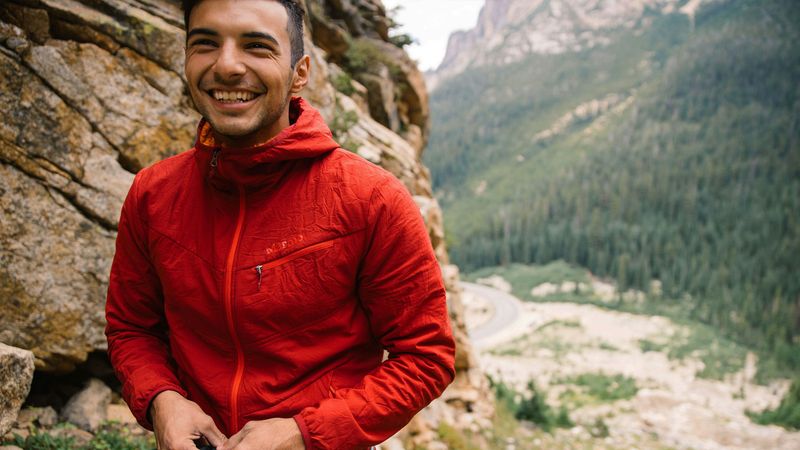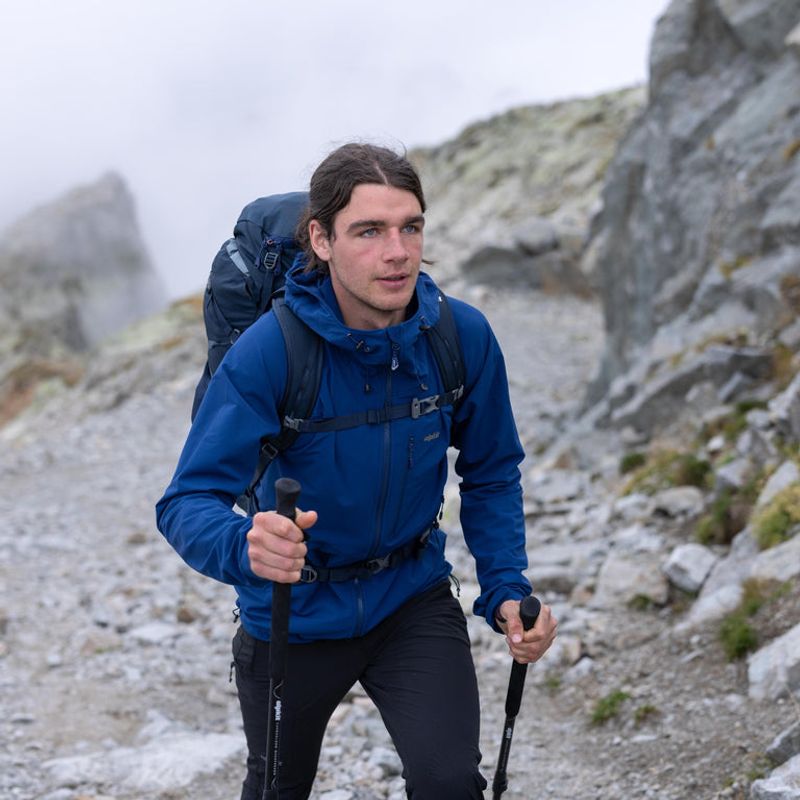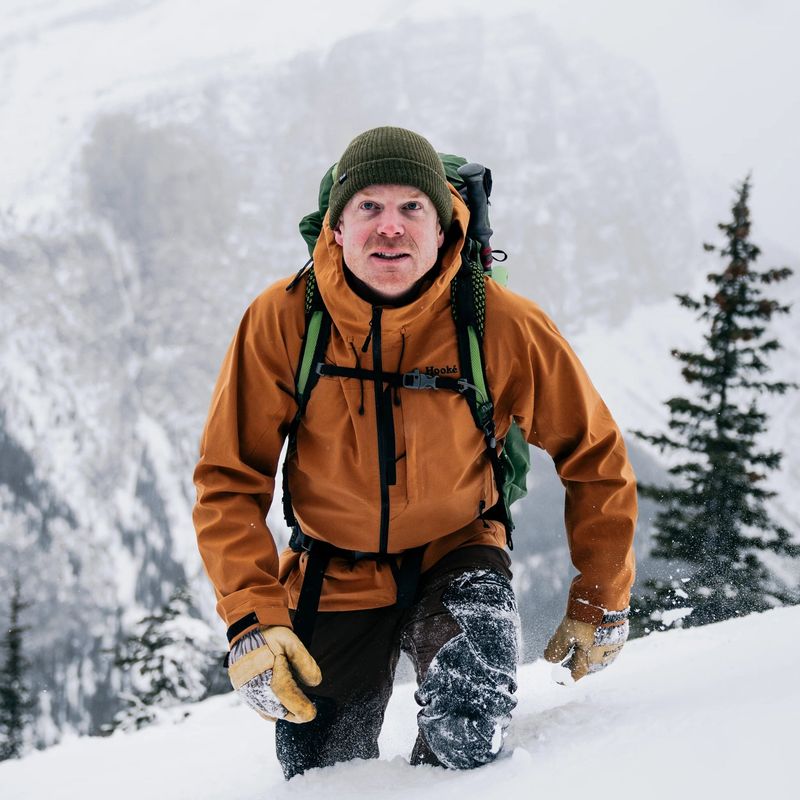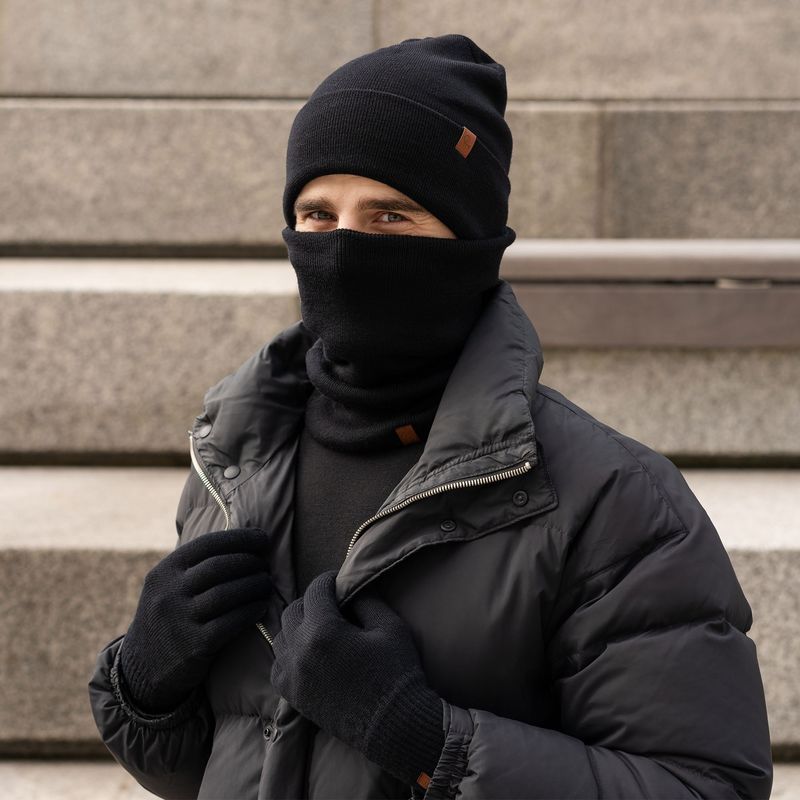Winter hiking demands smart layering, not just piling on heavy coats. The right combination of fabrics and fits lets you stay warm without overheating on steep climbs, then protects you when you stop for a snack break. Understanding how each layer works together transforms cold-weather adventures from miserable slogs into comfortable journeys. This guide walks you through twelve essential layering pieces that experienced hikers rely on when temperatures drop and trails get icy.
1. Moisture-Wicking Base Layer (150-200 gsm)
Your base layer sits right against your skin, working overtime to pull sweat away before it turns into a clammy chill. Merino wool around 200 gsm offers natural temperature control and fights odor even after days on the trail. Synthetic options dry faster and handle abuse better, making them popular for high-energy treks.
When you stop moving, a wet cotton shirt will steal your body heat instantly. Quality base layers prevent that dangerous cooling by keeping moisture on the move. Look for fabrics that feel smooth, not scratchy, since you will wear these for hours.
Popular choices include the Icebreaker 200 Oasis for merino fans or any lightweight synthetic crew. Both tops and bottoms matter equally in freezing conditions.
2. Lightweight Synthetic Base for High-Output Days
Some days you know you will be pushing hard uphill, heart pounding and sweat flowing. Polyester and elastane blends excel at dumping moisture fast, keeping you from getting soaked inside your layers. These synthetics outpace merino when speed-drying becomes critical.
Steep climbs and trail runs generate serious heat, even in winter. A base designed for high output prevents the soggy feeling that slows you down. The fabric stretches with your movement and bounces back without sagging.
Save your merino for moderate-paced hikes and reach for synthetics when the route profile looks brutal. The difference in drying time can make or break your comfort on intense days.
3. Grid-Fleece Midlayer
Grid fleece features raised squares or channels that trap warm air while letting excess heat escape through the gaps. This clever design breathes far better than traditional solid fleece, perfect for maintaining your pace without overheating. Patagonia updated their famous R1 to use Power Grid-style construction for exactly this reason.
When you are moving fast, solid fleece can turn into a portable sauna. Grid patterns solve that problem by balancing insulation with airflow. Pair one with a light wind layer and you cover a huge temperature range.
The texture looks unusual at first, but once you feel the difference on a long climb, you will understand why experienced hikers swear by this midlayer style.
4. Active-Insulation Jacket (Synthetic)
Traditional puffy jackets trap heat so well they force you into constant on-off cycles. Active insulation changes the game with air-permeable fills like Polartec Alpha that warm you while releasing excess heat. You can actually hike in these without turning into a sweat factory.
Stop-and-go hiking becomes much simpler when your insulation breathes with you. No more frantic unzipping every uphill or shivering through every break. The fabric works continuously to balance your temperature.
Check out options like the Patagonia Nano-Air Ultralight, Arc’teryx Proton Hoody, or anything in the Rab Xenair lineup. These jackets represent a genuine innovation in layering systems.
5. Traditional Fleece (200-300 Weight)
Sometimes the old ways still work best. Classic solid fleece jackets deliver reliable warmth, dry quickly when damp, and survive years of hard use without falling apart. Under a wind or rain shell, they create an effective barrier against bitter cold.
Grid fleece might breathe better, but solid fleece offers more versatile, all-around performance. The dense fabric blocks wind better on its own and provides consistent insulation across the entire garment. Durability matters on long trips where gear takes a beating.
Weight ratings between 200 and 300 hit the sweet spot for winter hiking. Lighter feels too thin, heavier becomes too bulky under shells.
6. Windshell (Air-Permeable Wind Shirt)
An ultralight nylon windshell weighs just ounces but adds shocking warmth by blocking wind chill. Fabrics like Pertex Quantum Air allow some airflow, keeping you from overheating during uphill grinds. The warmth-to-weight ratio makes these shells nearly magical.
Wind steals body heat faster than cold air alone. A thin barrier that stops wind while breathing makes a bigger difference than adding another fleece layer. Good windshells pack down smaller than a water bottle.
Wear one over your midlayer on breezy ridges or under your hardshell for extra warmth. The versatility and tiny pack size earn these a permanent spot in winter packs.
7. Fully Windproof Softshell
Softshells with windproof membranes like WINDSTOPPER offer serious protection while maintaining flexibility and comfort. These jackets breathe better than hardshells but block wind far more effectively than basic windshells. The stretchy, brushed-back fabric feels great against other layers.
WINDSTOPPER defines windproof as less than 1.0 CFM air permeability, meaning virtually no wind penetrates. You get hardshell-level wind blocking with softshell comfort. The trade-off comes in water resistance, which ranges from light drizzle to none.
For dry, windy winter conditions, a windproof softshell often replaces both windshell and hardshell in your system. The comfort factor alone makes believers out of skeptics.
8. Hardshell (Waterproof/Breathable)
Your hardshell serves as the final defense against rain, snow, and fierce wind. Available in 2-layer, 2.5-layer, or 3-layer constructions, these waterproof-breathable shells keep external moisture out while theoretically letting internal vapor escape. Three-layer versions offer the most durability for winter pack hauling and rough terrain.
The key word is theoretically because hardshells trap moisture if you work hard inside them. Use your storm shell only when weather demands it, not as an all-day layer. When conditions turn nasty, nothing else provides this level of protection.
Quality matters here since cheap shells either leak or suffocate you. Invest in proven fabrics and construction.
9. Light Synthetic Belay Puffy (Carry)
This warmer jacket lives in your pack until you stop moving. Summit breaks, lunch spots, and photo sessions all demand extra insulation once your body heat drops. Synthetic fills like PrimaLoft Gold Active+ continue insulating even when damp from snow or internal moisture.
The beauty of a belay puffy lies in its simplicity. You never hike in it, so breathability does not matter. Just pull it on over everything else when you stop, then stuff it back before starting again.
Synthetic insulation costs less than down and handles wet conditions better. For winter hiking where moisture is constant, synthetic makes more sense than gambling on down staying dry.
10. Insulated or Wind-Resistant Bottoms
Legs generate massive heat when climbing, making bottom layers tricky to get right. Grid-fleece tights, breathable softshell pants, or light insulated pants each solve different problems. Start with breathable options and add insulation as temperature and wind conditions demand.
Too much insulation on your legs creates swamp conditions fast. Too little leaves you shivering on exposed ridges. The solution involves matching pants to activity level and carrying an extra layer for stops.
Many hikers layer long underwear under softshell pants, then add insulated over-pants only when temperatures plunge. This modular approach handles the widest range of conditions without forcing compromises.
11. Waterproof/Breathable Over-Pants (3-Layer Ideal)
When precipitation or spindrift starts flying, storm pants protect your insulating layers from getting soaked. Full-length side zips become crucial for venting during ascents without removing boots or crampons. Three-layer construction handles abrasion from snow, ice, and rocks better than lighter options.
Like hardshell jackets, waterproof pants trap moisture if you wear them constantly. Throw them on when weather turns nasty, then remove them when conditions improve. The side zips make this process quick and easy.
Quality zips and reinforced cuffs matter since these pants take serious abuse. Budget options fail at zippers first, leaving you with expensive trash.
12. Neck Gaiter, Buff, and Breathable Balaclava
Thin merino or synthetic tubes and face covers deliver enormous warmth for almost no weight or bulk. A simple neck gaiter stops cold air from sneaking down your collar, while a balaclava protects your entire face from wind, spindrift, and frostnip. Micro-adjustments take seconds as conditions change.
Exposed skin loses heat fast and risks frostbite in extreme cold. These lightweight accessories let you cover or uncover specific areas without major gear changes. Pull the gaiter over your nose on windy ridges, then lower it when you start sweating.
Carry both styles so you can mix protection levels. The weight penalty is measured in ounces, not pounds.

